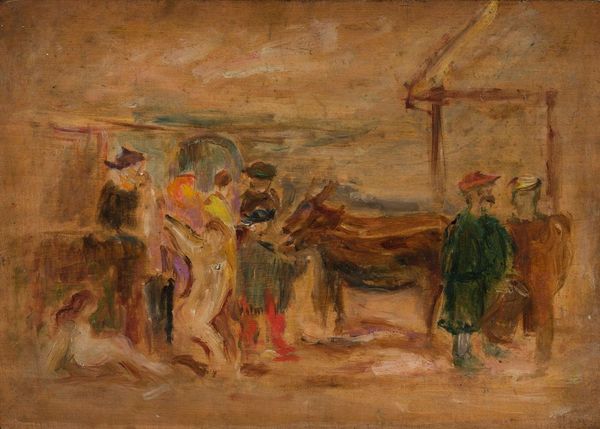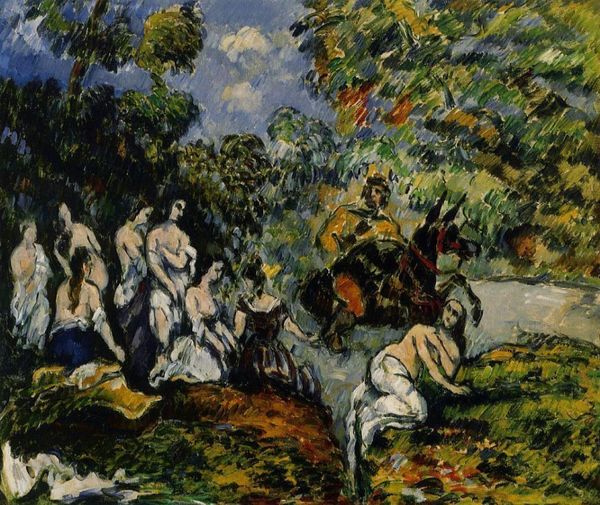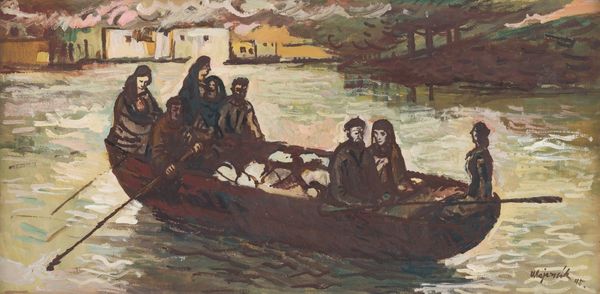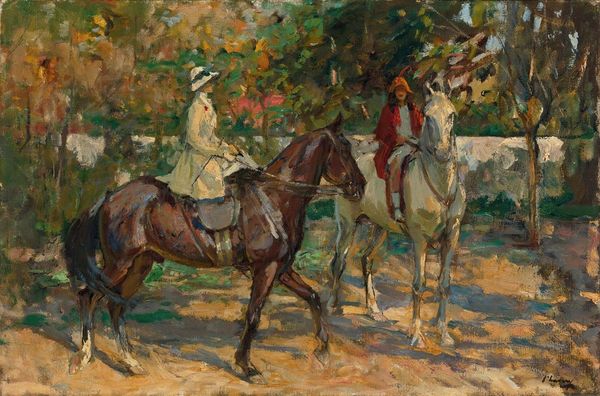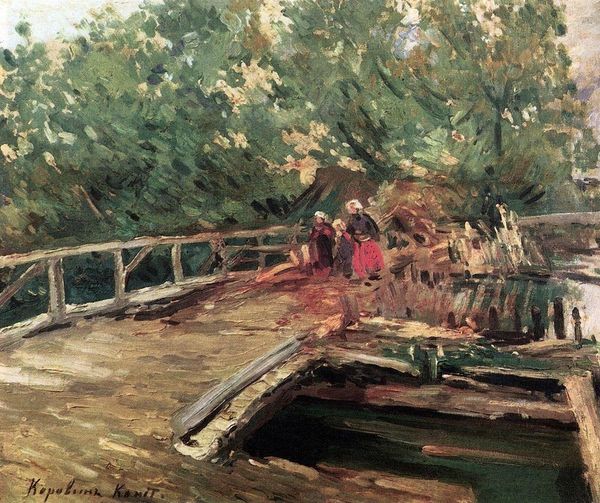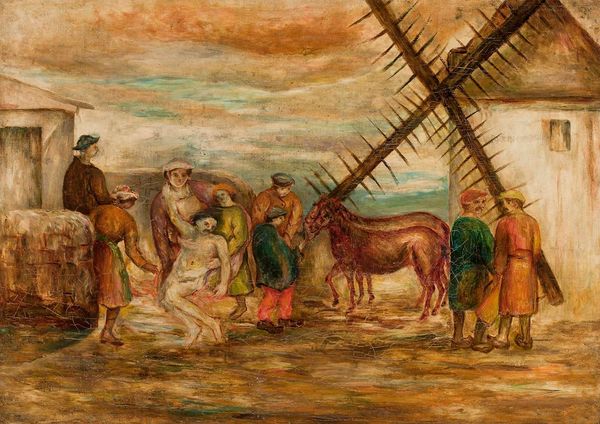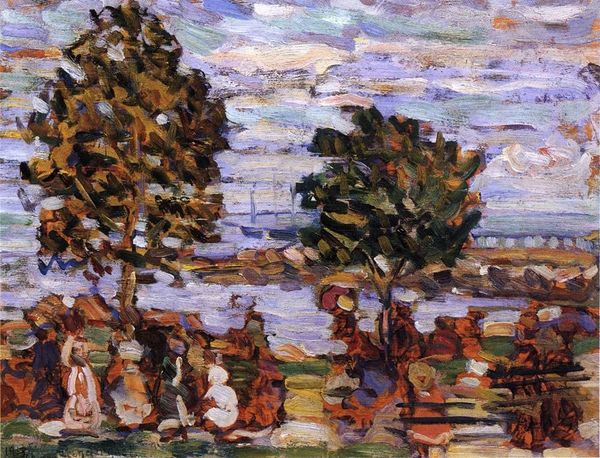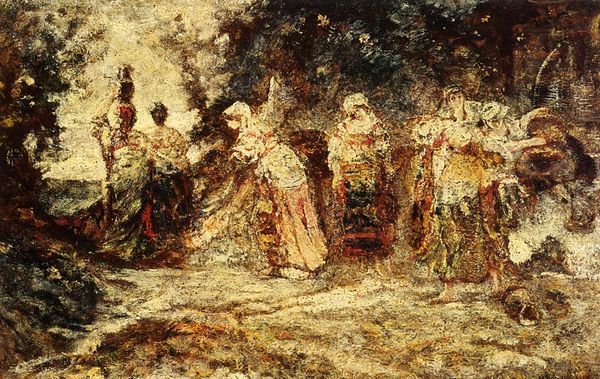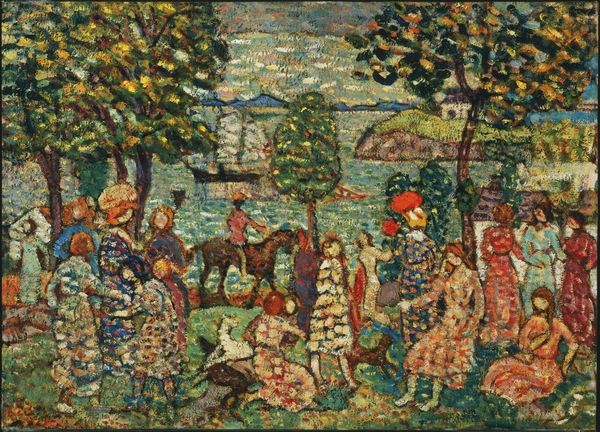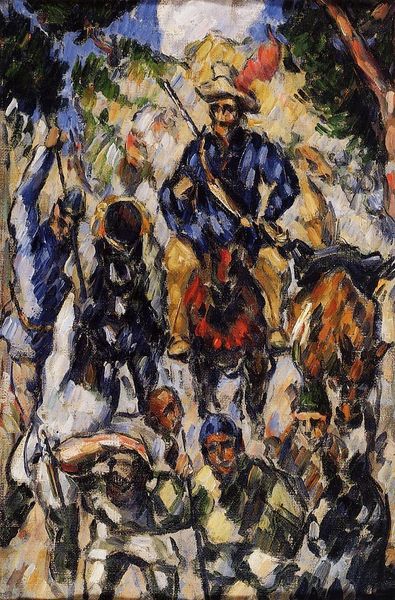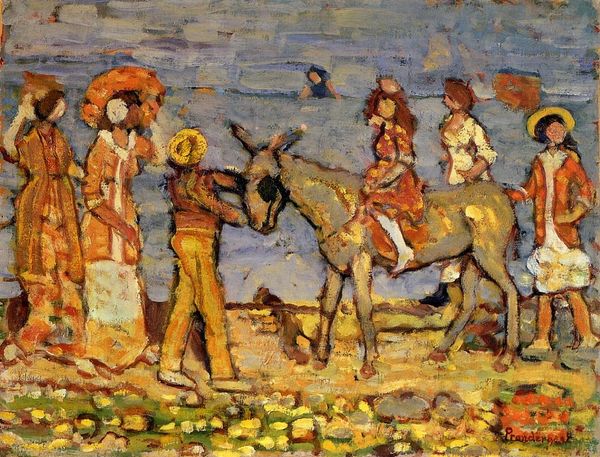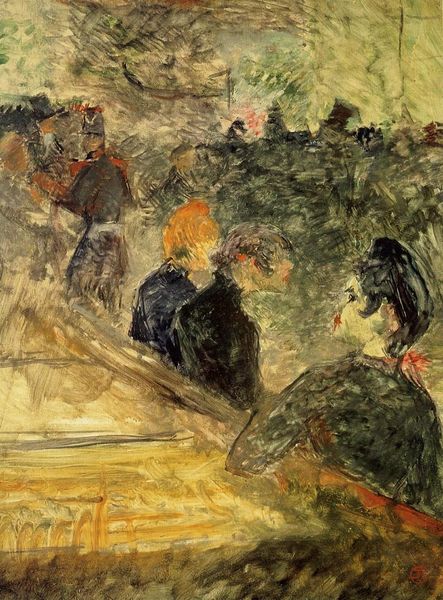
oil-paint
#
impressionism
#
oil-paint
#
landscape
#
impressionist landscape
#
figuration
#
oil painting
#
genre-painting
#
post-impressionism
Dimensions: 25.5 x 33.5 cm
Copyright: Public domain
Curator: Looking at Paul Cézanne's "Leaving on the Water," painted around 1882, I'm immediately struck by its… awkward charm. It doesn’t feel polished. Editor: The initial impression is certainly fragmented. The roughness of the brushstrokes, combined with that cool palette…it really emphasizes the materiality of the paint. Almost like raw pigment itself constitutes the scene, these figures molded from impasto. Curator: That raw quality makes sense in light of the Impressionist movement, and post-Impressionist experiments, of course. But considering Cézanne’s place in that social landscape—an artist consistently rejected by the Salon early in his career—I can't help but read into this seeming sketchiness. Is it a conscious rejection of academic polish, a statement about what constitutes 'finished' art? Editor: Or, perhaps, the roughness of application directly mirrors the labour implicit in the subject. These figures working on the water are evoked using materials applied in an analogous manner - an indexical representation of their activity through the artist’s labor. You can almost feel the resistance of the oil paint itself. It underscores that physical effort. Curator: Interesting point. It ties into broader themes of labour representation, particularly within Impressionism’s focus on everyday life. While his contemporaries depicted leisurely activities, Cézanne presents…well, work. This challenges conventional portrayals of leisure as indicative of modernity and the societal changes of the time. Editor: Absolutely. And by laying bare the process, Cézanne calls our attention to the making of art, it isn't just an image, but a result of someone’s deliberate and material choices. Consider also how radical it was at that time, and how it prefigures a modernist obsession with media. Curator: It really encapsulates the transitional nature of Cézanne’s work; moving from Impressionism’s fleeting moments toward something more solid and structural. Seeing this work in light of his personal struggles as an artist and in light of broader social conversations… it deepens the resonance so much. Editor: Indeed, noticing the way his working processes, materials and labor enhance both the painting and underscore it as an object, changes your impression considerably. It's an honest and powerful visual statement.
Comments
No comments
Be the first to comment and join the conversation on the ultimate creative platform.

